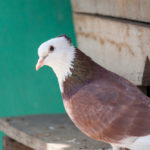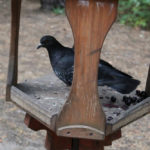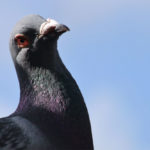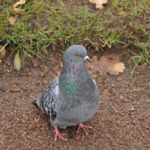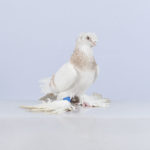Pigeons are filthy birds. And because they prefer to live together in large colonies, they can spread a lot of diseases and do a lot of damage. But why pigeons do keep coming back?
Pigeon droppings are well known for causing pedestrians to slip and fall. Highly acidic, pigeon droppings can dissolve the clear coating and paint on your car, and damage ornamental ironwork and statuary.
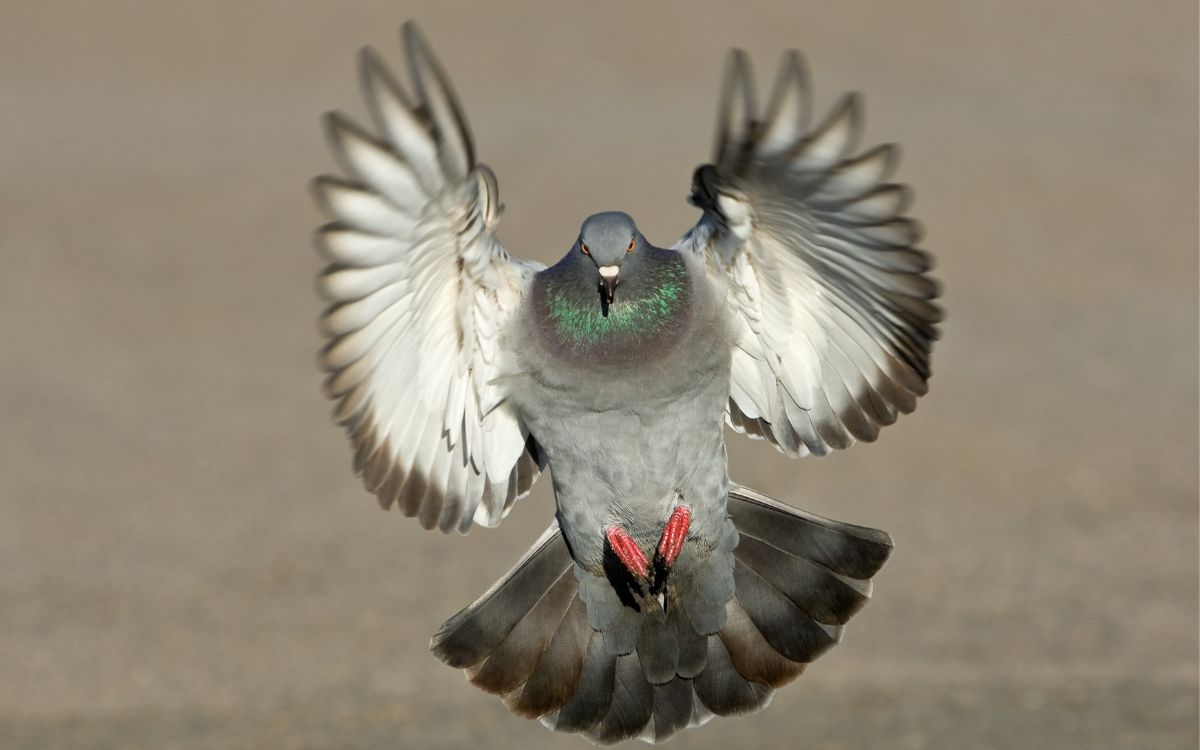
Even worse, pigeons can transmit the bacteria that cause salmonella, cryptococcosis, toxoplasmosis, and food poisoning, as well as the fungus responsible for Valley fever (coccidioidomycosis). They can transmit Chlamydia bacteria to backyard chickens (without mating with them).
Dried pigeon droppings can become the dust that carries psittacosis to pet birds and people, and histoplasmosis to pet cats and people. Wild pigeons pick up many different strains of these diseases, increasing the probability that antibiotics won’t work when pets or people get infected.
To avoid the damage and disease pigeons can cause, it is imperative to keep them from coming back to your property. In this article, we will discuss the three main reasons pigeons keep coming back, and 10 ways to deter pigeons from returning to your home.
Pigeons Are a Lot More Intelligent Than You Might Think
If you really want to understand why pigeons keep coming back, it helps to think like a bird.
Bird brains are underestimated. Many birds, especially pigeons, have a highly developed hippocampus. This part of their brain gives them an uncommon ability to remember locations.
Of course, pigeons use their mental abilities to remember where they found garbage, but the Proceedings of the National Academy of Sciences of the USA tell us that they can remember at least 800 and probably 1200 places where they found food.
A pigeon named Linus, kept by researchers at the University of Washington, was able to identify 62.3 percent of 3,037 locations he had seen for 5 seconds or less when there was a food reward for identifying them. Linus eventually demonstrated his ability to remember where food could be found 88,200 times.
Pigeons have amazing abilities. But what does that have to do with why they keep coming back to your yard?
Researchers at the Oxford Animal Behaviour Center have identified these four reasons:
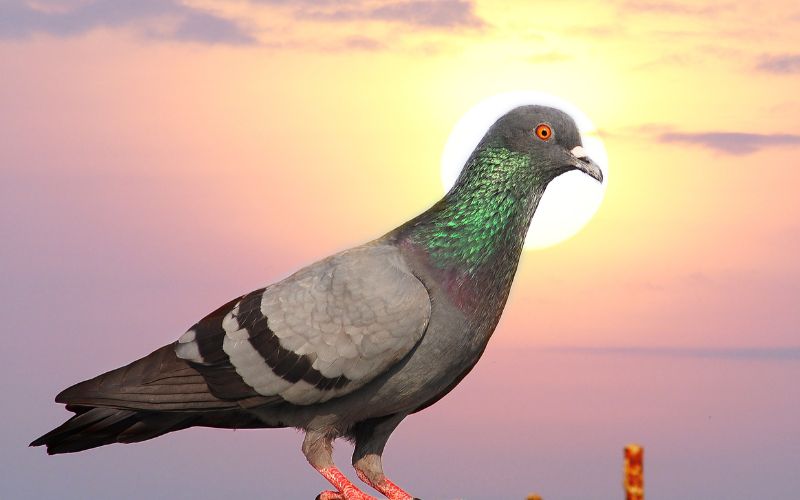
This means that they fly along routes where they have seen food. If they don’t see food, they don’t put a location on their regular flying route. If they find food in the same location 8 to 10 times, they will fly as far as 15 miles (25 km) to come back to look for more.
This is the reason these pesky birds are mostly found in urban areas. They use trees, chimneys, light poles, and roofs as checkpoints to make sure they are on their route.
3. Pigeons like to fly along the edges of areas with trees
Trees give pigeons protection from hawks, owls, and other predators that might attack them from above. They will fly along the edges of a wooded area to avoid flying over a road or a swimming pool.
4. The more pigeons fly to your backyard, the less they rely on visual cues to find their way
By the time a pigeon has visited your trash can 50 times, it will be able to use its “internal compass” to find it in the dark and even if landmarks on its usual path have changed.
Three Main Reasons Why Pigeons Keep Coming Back
These findings explain how pigeons keep coming back to your property, but what explains why pigeons keep coming back to your property?
Generally, there are three main reasons.
1. Pigeons have a great sense of smell
Pigeons are the bloodhounds of the world of birds. When they have not had a chance to learn landmarks by sight, they navigate new territory to find food, nesting places, and the safety of large numbers of other pigeons by smell.
Researchers have discovered that when pigeons that had just arrived at a roosting site were given zinc sulfate in bird food to block their sense of smell, very few of them came back to raise their young. Most were never seen again.
2. Pigeons mate year-round
Most birds attempt to raise one or two broods of chicks a year. If winters are warm enough, pigeons mate all 12 months of the year. Both the male and the female take care of their well-hidden squeakers (squabs, or baby pigeons).
You may see the same pigeons coming back all the time because they have a nest and babies you don’t know about.
3. No matter how far pigeons fly away, they can always find their way back to your property
If you let a pigeon stay on your property until it is four or five months old, it will be able to find your house for the rest of its life. The reason for this is that about the time a pigeon’s cere (the fleshy organ just above its beak) turns fully white, it has the homing ability.
As we will discuss a little later, however, there are ways you can interfere with the ability of pigeons to keep coming back to roost in your home and in your yard.
10 Ways to Deter Pigeons from Returning to Your Home
What do these studies of pigeon flight behavior tell us?
It is important to take corrective measures the first time you see pigeons!
The more opportunities you give pigeons to eat in your backyard, the easier it is for them to find it. If you let pigeons build their nests on your property, their hatchlings will expect your property to be their all-you-can-eat buffet.
So, let’s take a look at 10 ways the top pest control companies use to exclude pigeons from your property.
1. Never put out food for pigeons!
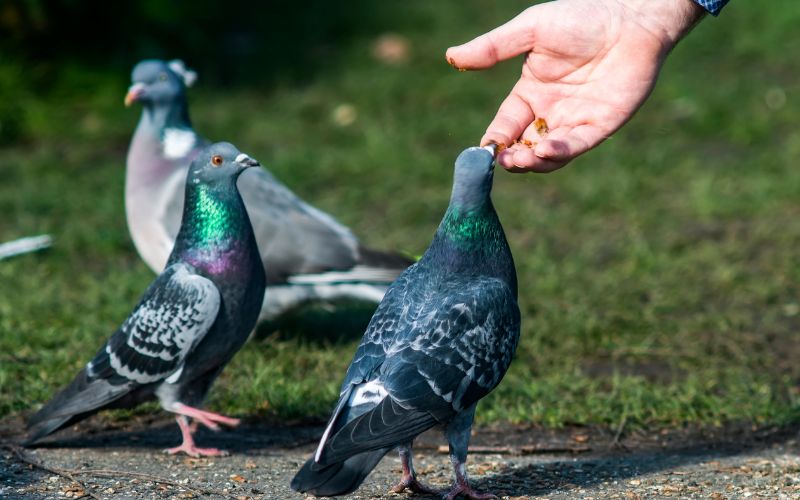
One of the best ways to reduce the number of pigeons around your home is to avoid feeding them. This means that you don’t sit on a bench tossing passing pigeons crackers or pieces of stale bread.
You also need to make your birdseed feeders for songbirds pigeon-proof.
It takes consistent effort to keep these greedy marauders out of your birdseed feeders, but these simple steps will help:
- Fill your bird seed feeders with black oil sunflower seeds. Songbirds love them, but pigeons don’t.
- Avoid putting out bird seeds that pigeons like, such as corn, oats, wheat, sorghum, millet, or Nyjer.
- Use a birdseed feeder with short perches. (You can also cut the existing perches down.) Most songbirds are OK with a perch that is just 1 inch (25 mm) across, but pigeons need 2 inches (50 mm). Pigeons will still eat any seeds that spill onto the ground, but they won’t compete with other birds at the feeder.
- Encircle your bird seed feeder with chicken wire. Most songbirds can fly through it, but pigeons are too big.
- Divert pigeons where you want them to go by putting out a dish of food on the ground at the edges of your property, or as far away from your property as you have permission.
Cutting off the food supply is not enough to completely rid your property of pigeons, but it will reduce their numbers by 40 to 50 percent.
2. Deprive pigeons of other food sources
Pigeons like to stay in the same location with as many other pigeons as possible for life. Once they have determined that your yard or your home provides them with a reliable food source, they will want to stay with you forever.
Their hatchlings and their hatchlings’ hatchlings will, too.
You probably already know that pigeons find lots to eat in your trash. Keep them from feeding on your household waste by keeping lids on outdoor garbage containers and garbage dumpsters.
Don’t let pigeons dine on your landscape plants. Deadhead your flowers as they die. This keeps pigeons from feasting on their seeds. Or plant flowers that make seeds that pigeons won’t eat, like sunflowers.
If you have fruit trees or berry bushes, keep up with your harvest. Don’t let fruit or berries fall to the ground, where pigeons will find them. Consider protecting your fruit and berries as they ripen with bird netting.
Use mulch around plants, especially when you turn the earth, exposing earthworms and grubs. Make pigeons work for their meal of worms and bugs.
3. Don’t let pigeons make their home in your home
Pigeons like to roost and build their nests in warm, elevated locations that are safe from predators and out of the weather. They often find these places under the eaves of roofs, inside attics with openings to the outdoors, in dog houses, and under gazebos or pool umbrellas.
4. Seal all entrances to your attic, your garage, and the crawl space under your house
Pigeons like to nest in warm, quiet, protected corners. An indoor nesting space is always preferable to an outdoor nesting space.
Seal cracks in your wall. Use silicone to caulk potential entry points around utility cables and plumbing. Replace any siding that has holes in it. Hang bird nets or hardware cloth over larger openings until you have a chance to repair them.
5. Even if you can’t get rid of pigeons, make sure you get rid of pigeon droppings
Keeping every aspect of your property pigeon-poop free is essential for dissuading pigeons from coming back to your house.
Pigeon droppings are not just germ-ridden, smelly, and corrosive. They also act as a homing signal for other pigeons.
Pigeons like to live in large groups, to minimize the risk of predation. Pigeon droppings are a signal to birds that have not yet fouled your home to join the pigeons that are already there.
It is easiest to remove pigeon feces and urine while they are still wet. Put on eye protection and gloves, and wash them away with a high-pressure water hose.
When white deposits of uric acid and feces are dried on surfaces, loosen them with soapy warm water. Collect them into a tarp, and then dispose of the tarp and droppings together into the trash.
You do not need to wear a respirator for this procedure, but try to avoid breathing in feathers or dust from the dried droppings.
6. Install anti-roosting spikes
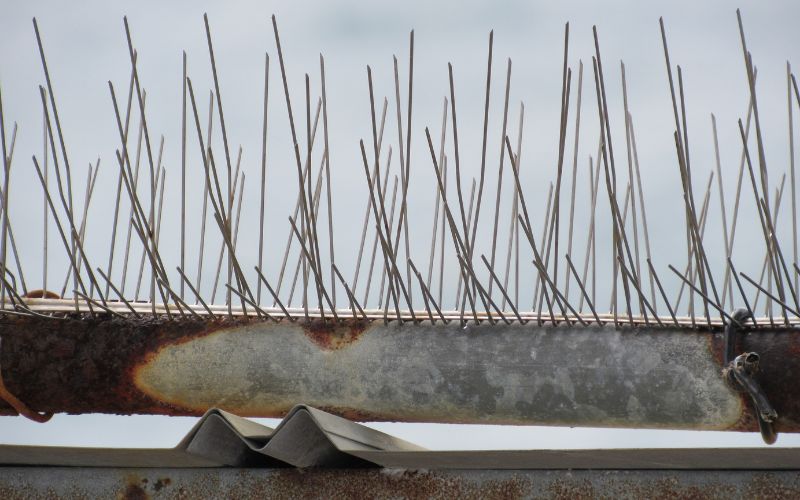
Have you ever looked at the ledge outside the windows of most tall buildings? Chances are that you will see a row, or rows, of tiny plastic spikes that look something like bristles.
You won’t see these spikes from ground level, because they are made of polycarbonate, the same material used to make shatter-proof lenses for eyeglasses. Clear plastic spikes don’t detract from the aesthetic appeal of a skyscraper, and they won’t detract from the curb appeal of your home, either.
If you prefer the look of spikes that glisten in the sun, there are spikes that are made from a material called Nixalite.
Pigeon spikes deprive pigeons of a place to land and perch. They keep pigeons from roosting at night, and they deprive pigeons of a place to build their nests.
It is easy to install bird spikes. Just buy bird spikes with an adhesive on the back.
Peel off the paper on the back of a roll of spikes, and lay it down on the ledge or pipe or another surface you want to protect.
You can also find bird spikes that are attached with tie-downs or nailed to a ledge. You may need to power wash them occasionally to remove accumulated debris.
Just be sure not to hang pigeon spikes horizontally on an exterior wall. Pigeons can use them as a base for building a nest that hangs out into the air.
7. Remove old nests and materials pigeons can use to make nests
Pigeons like to recycle. They will gladly lay their eggs in a used nest, no matter how many mites and ticks or how much eggshell and dried droppings it contains.
The scent of a used nest advertises your location as a place that pigeons will like. For these reasons, it is important not to give pigeons a chance to reuse old nests. Remove them, and dispose of them in the trash.
For ethical reasons, we do not recommend destroying a nest with hatchlings or squeakers outside, although we understand the temptation. Do not risk accidentally misidentifying the occupants of a nest and harming a wild bird, which would be a violation of federal and state law.
8. Put up bird netting
Even if you remove an old nest and give the ledge where the pigeons build it a thorough scrubbing, the fact is, the location is still prime territory for the same pigeons to build a new nest. Keep this from happening by covering the ledge, pipe, or outcropping with bird netting.
Always remove old nests before you put up new netting. This way, you do not trap any birds inside the net. You won’t have to remove decaying, dead birds about a week later.
Be sure the netting is tacked to all of the edges you want to protect. Pigeons have lots of time to find holes in nets and places you forgot to tack down.
9. Install a motion-activated water sprinkler system
Just like dogs, cats, and people, pigeons don’t like getting sprayed with water, especially in cold weather. A motion-activated water sprinkler system will encourage pigeons to fly away to a more hospitable location.
Be sure to point the sprinkler system’s sensor up, not out. You want to stop birds from flying into your yard, not pets and people from walking across it.
On the topic of water, it also helps to remove your bird bath, at least temporarily. Pigeons are larger than songbirds. and will take over a bird bath, given the chance.
You can always put the bird bath back where it was once you have your pigeon problem under control.
10. Tack weatherproof string or reflective plastic over pigeon roosting and nesting sites

If you have too many surfaces to protect by using spikes, the next best pigeon deterrent is a weatherproof string hung over the flat surfaces where they like to land. The string will keep them from finding a place to perch, so they have to fly somewhere else.
Reflective plastic strips hung in front of ledges and eaves capture the rays of the sun, temporarily blinding birds that might want to make your home their home.
Questionable Methods of Controlling Pigeons
There are also some popular methods of controlling pigeons that get mixed results.
Ultrasonic pigeon repellents deter pigeons with high-pitched sounds that people can’t hear. However, if you run them constantly, pigeons will get used to them so they do not stay away.
Ultrasonic generators may irritate dogs and cats.
Sonic cannons imitate the sound of gunshots. Sonic cannons are effective within a radius of about 300 feet (100 meters). They go off at irregular intervals to keep birds of all kinds off your property.
Your neighbors and your pets, however, may object to the noise, and you could be reported to the police for discharging a firearm. If the pigeons get used to them, they are just a temporary solution.
Shock tapes create a shocking experience for pigeons and other birds that try to land on your ledges and under your eaves. Running from 2D batteries or a solar generator, they can generate electricity that protects a flat surface up to 150 feet (50 meters) long.
It is important to place shock strips where they won’t be discovered by pets or children.
Chimney caps keep pigeons out of your chimneys. However, they can also trap pigeons and other birds inside your chimney if you do not inspect it carefully before you install the cap.
You can coax pigeons out of your chimney by placing an open cardboard box in your unlit fireplace. Pigeons will come to inspect, and you can close them into the box. However, the box must fit snugly into the firebox or you will have pigeons flying around your house.
Bad Ideas for Deterring Pigeons
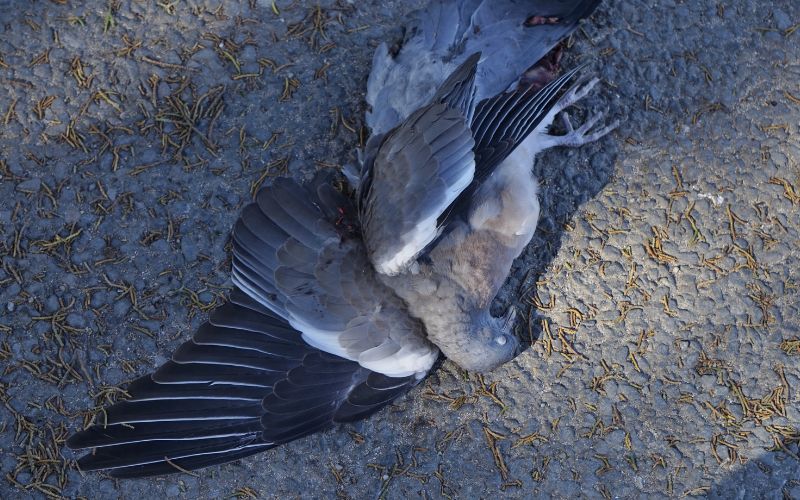
There are also methods of deterring pigeons that never work. One is a bird repellent gel called Avitrol. It is poison. The idea is that pigeons will see dead pigeons that were killed by this lethal method, and fly away. However, if you only kill a few pigeons, the others will have more food, and raise more babies.
Glue strips trap pigeons on ledges and balcony railings, where they will starve, or be caught by predators. However, they can also die and decay in place.
Fake owls will not scare pigeons away, although an animatronic owl might. You will need to move the animatronic owl around every few days for pigeons to remain afraid of it.
Trap-and-release methods are also usually unsuccessful. These birds are not called homing pigeons for no reason at all.
People Also Ask
Q. Do I need to keep pigeons off the window sills of my one-story house?
A. No, cats and other predators will do that for you.
Q. Is it legal to kill pigeons?
A. Pigeons aren’t considered to be wild or migrating birds, so it is legal to exterminate them. However, this is usually a bad idea.
Killing pigeons with poison is possible, but only at the risk of killing songbirds, other desirable birds, and pets. If your dog or cat finds a pigeon that is weakened by poison and eats it, your pet becomes poisoned, too.
Shooting pigeons is effective, but it is usually illegal to discharge a firearm within city limits. (And pigeons are primarily urban birds, not rural birds.)
Pigeons do not necessarily fall where they can be retrieved, and they can decay, spread disease, and cause odor.
And even if you kill one pigeon, 10 more will come to take its place. A better approach is to make your home and yard inhospitable to pigeons so they go somewhere else,
Q. Is keeping pigeons dangerous to people with compromised immune systems?
A. There is DNA evidence that Cryptococcus can be passed from pigeons to people with immunodeficiency conditions, such as people taking chemotherapy and people with AIDS or HIV.
If you have a weakened immune system, it is important not to handle pigeon droppings and not to breathe in dust from dried pigeon droppings.
Q. Can people catch parasites from feral pigeons?
A. Breeding and roosting sites for pigeons can host bed bugs. People can be attacked by these bed bugs when they handle pigeon nests or pigeon feathers, or if they walk through a pigeon brood, for instance, on a balcony.
Dermatologists have also reported cases of ticks and mites being transferred from pigeons to people.
Q. How would I know that I caught parasites from pigeons?
A. Mites from pigeons are most likely to cause itchy skin. You might not notice a tick until it has engorged itself on your blood, but it is important to remove it without squeezing its contents into your bloodstream.


